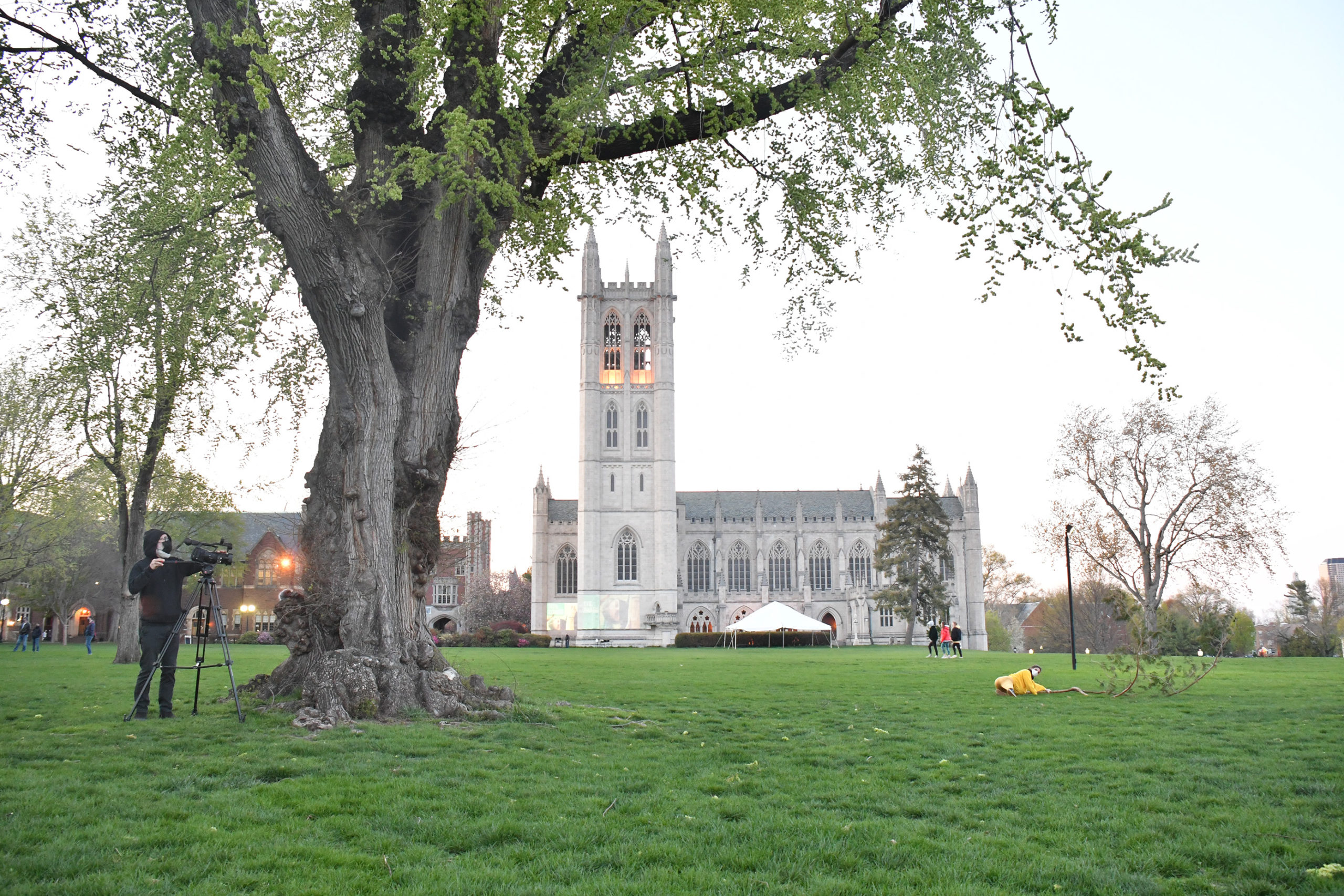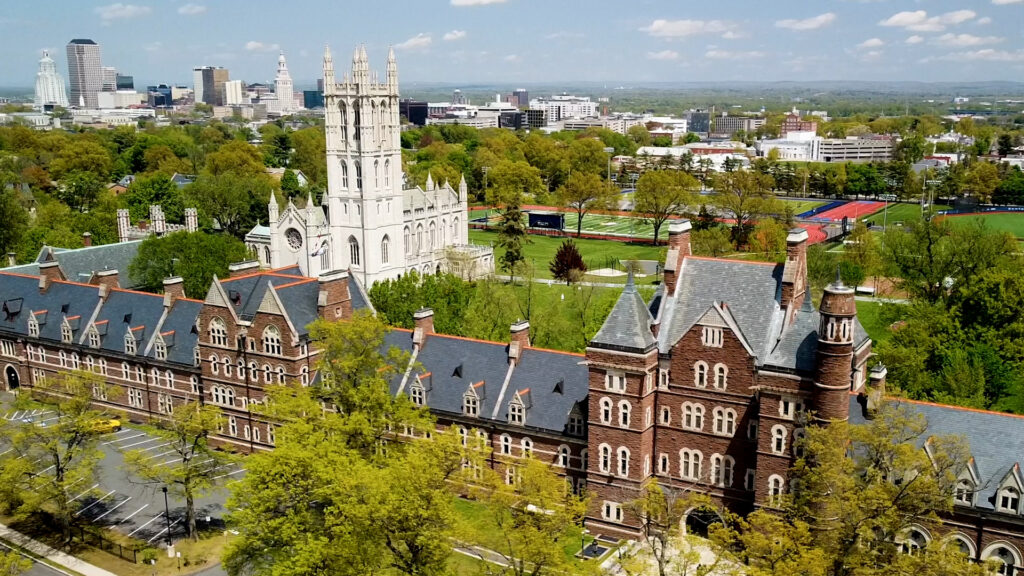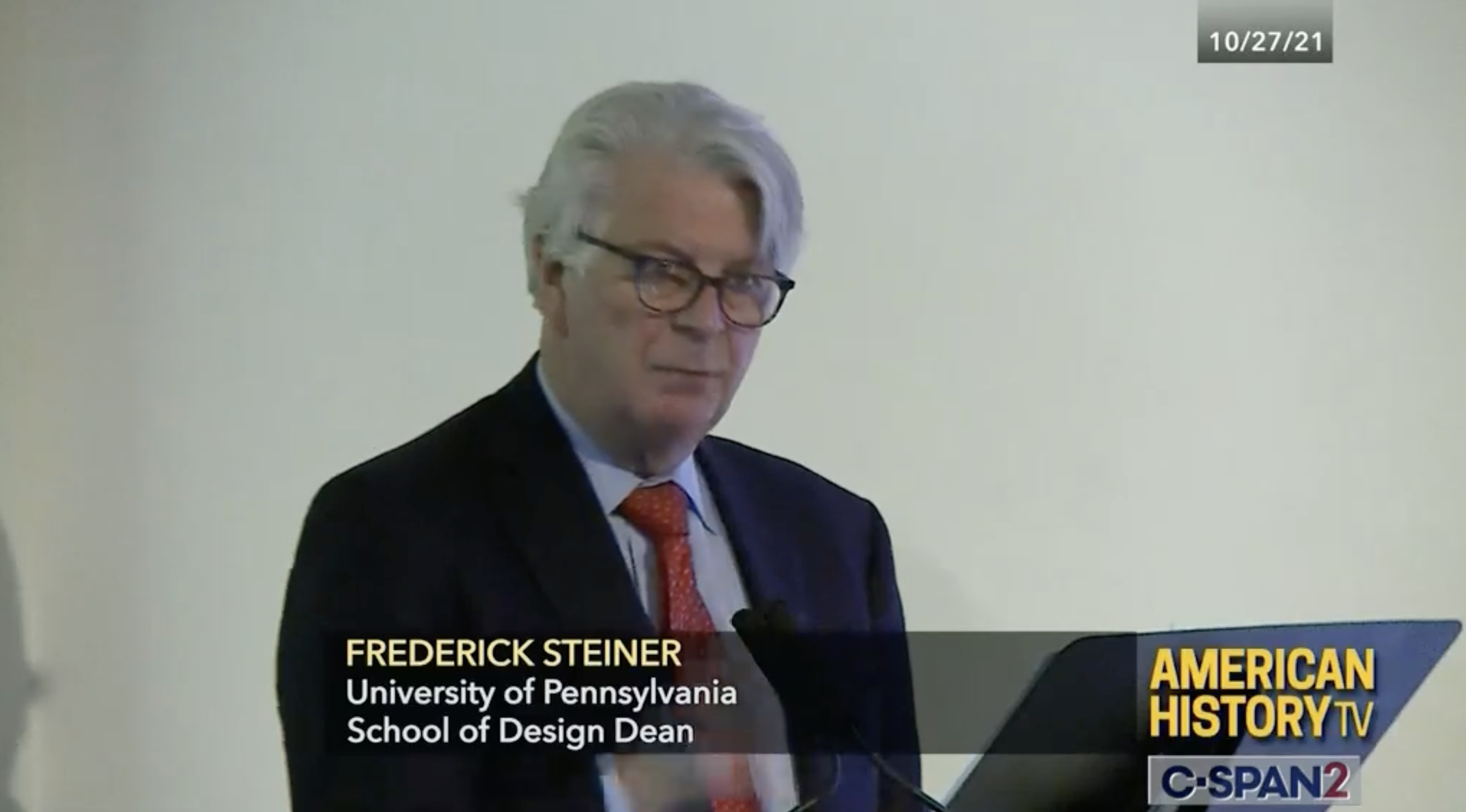
Courtesy of Trinity College, Hartford, CT
In post-Civil War America, Frederick Law Olmsted believed universities should play a critical role in advancing democracy. As he saw it, the physical environment– buildings and grounds – contributed to both the success of education as well as the shaping of character.
It’s perhaps not surprising that, in the course of his career, Olmsted planned numerous campuses including Cornell, Gallaudet, Berkeley, and Stanford University. His campus designs were focused on building community, having room for growth, and creating a picturesque setting.
In his hometown of Hartford, he contributed to the planning and the design of Trinity College (Project #00601). Olmsted’s involvement began in 1872 when the city of Hartford urged the College to relocate to accommodate the city’s expansion. The board of trustees sought out Olmsted to find the right plot of land and help design the campus. “A well-designed campus,” wrote Olmsted to the college president, would foster “acquisition of the general quality of culture which is the chief end of a liberal education.”
Architects were inspired by British campus design and sought to construct a grand four-quadrangle campus. Due to limited resources, plans were scaled back to a single quadrangle, framing the campus’ iconic “Long Walk.”
The Long Walk is positioned to orient campus buildings along Rocky Ridge, with elm trees, shading the quadrangle overlooking Hartford. One of those elm trees is a “Champion” for its species on the list of Notable Trees in the State of Connecticut. Celebrating the elm will be just one part of the Campus’ year-long plans to embrace its Olmsted heritage and use the bicentennial as a centerpiece for curricular and extracurricular activities, ranging from classroom discussions on brain health to carillon concerts and outdoor performances. (Some of the College’s events can already be found on the Olmsted 200 calendar).
The Long Walk is still an integral part of Trinity’s campus, and recently underwent a major restoration. The buildings along it house classrooms and lecture halls, and Trinity alums cherish the commencement march which proceeds along its well-worn path and onto the quad, graduating “’neath the elms.”
Olmsted and his sons remained involved at Trinity College until the early 1890s, advising the planning and development of the campus for over 20 years. Outside Hartford, they continued to focus on campus design. Olmsted Firm project records span 411 campuses including: Duke (852 plans); Williams (668 plans); Harvard Business School (460 plans) plus plans for other Harvard campuses; West Point (355 plans); Denison University (384 plans); Johns Hopkins University (279 plans); University of Maine (260 plans); Louisiana State University (178 plans); Sewanee College (170 plans); Colby College (110 plans); and Swarthmore College (100 plans).
During Olmsted 200, institutions across the country— including many above—are participating in the campaign’s Higher Education Working Group. These schools aim to explore their Olmsted heritage and inspire a new generation of Olmsted fans. If you are interested in learning more about this group, please email info@olmsted-200.org. Additional student and teacher resources are available here.
To learn more about Olmsted’s influence on campus design, sign up for the upcoming Symposium: The Olmsteds and Campus Design hosted by the National Association for Olmsted Parks at Duke University in DC on October 27.











